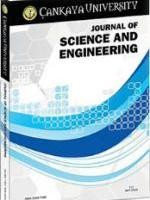Order-preserving Models for the Supervisory Control of Flexible Manufacturing Systems
Order-preserving Models for the Supervisory Control of Flexible Manufacturing Systems
Discrete event systems, supervisory control order-preserving models, flexible manufacturing systems,
___
- [1] M. H. de Queiroz, J. E. R. Cury, W. M. Wonham, Multitasking Supervisory Control of Discrete-Event Systems,Discrete Event Dynamic Systems, 15(4), (2005), 375—395.
- [2] W. Chao, Y. Gan,W. M.Wonham, Z.Wang, Nonblocking Supervisory Control of Flexible Manufacturing SystemsBased on State Tree Structures, Formal Methods in Manufacturing Systems, (2013).
- [3] P. N. Pena, T. A. Costa, R. S. Silva, R. H. C. Takahashi, Control of Flexible Manufacturing Systems under modeluncertainty using Supervisory Control Theory and evolutionary computation schedule synthesis, Information Sciences,329, (2016), 491–502.
- [4] T. Sprock, C. Bock, L. F. McGinnis, Survey and classification of operational control problems in discrete eventlogistics systems (DELS), International Journal of Production Research, 57(15-16), (2019), 5215–5238.
- [5] R. Rl-Khalil, Z. Darwish, Flexible manufacturing systems performance in US automotive manufacturing plants:a case study, Production Planning & Control, 30(1), (2019), 48–59.
- [6] K. Schmidt, T. Moor and S. Perk, Nonblocking Hierarchical Control of Decentralized Discrete Event Systems,IEEE Transactions on Automatic Control, 53(10), (2008), 2252–2265.
- [7] L. Feng and W. M. Wonham, Supervisory Control Architecture for Discrete-Event Systems, IEEE Transactionson Automatic Control, 53(6), (2008), 1449–1461.
- [8] J. E. R. Cury, M. H. de Queiroz, G. Bouzon, M. Teixeira, Supervisory control of discrete event systems withdistinguishers, Automatica, 56, (2015), 93-104.
- [9] C. G. Cassandras, S. Lafortune, Introduction to discrete event systems, Second edition, Springer, (2008).
- [10] Z. Li, M. Zhou and N. Wu, A Survey and Comparison of Petri Net-Based Deadlock Prevention Policies forFlexible Manufacturing Systems, IEEE Transactions on Systems, Man, and Cybernetics, Part C (Applicationsand Reviews), 2(2), (2008), 173–188.
- [11] M. Zhao, M. Uzam, Y. Hou, Near-optimal supervisory control of flexible manufacturing systems using divideand-conquer iterative method, Advances in Mechanical Engineering, 8(3), (2016), 1–17.[12] Y. F. Hou, K. Barkaoui, Deadlock analysis and control based on Petri nets: A siphon approach review, Advancesin Mechanical Engineering, 9(5), (2017).
- [13] Y. Li, L. Yin, Y. Chen, Z. Yu, N. Wu, Optimal Petri net supervisor synthesis for forbidden state problems usingmarking mask, Information Sciences, 505, (2019), 183–197.
- [14] K. Schmidt, C. Breindl, Maximally Permissive Hierarchical Control of Decentralized Discrete Event Systems,IEEE Transactions on Automatic Control, 56(4), (2011), 723–737.
- [15] K. Cai,W. M.Wonham, Supervisor Localization: A Top-Down Approach to Distributed Control of Discrete-EventSystems, IEEE Transactions on Automatic Control, 55(3), (2010), 605–618.
- [16] R. A. Williams, B. Benhabib, K. C. Smith, A hybrid supervisory control system for flexible manufacturing workcells,IEEE International Conference on Robotics and Automation, 3, (1994), 2551-2556.
- [17] A. Nooruldeen, K.W. Schmidt, State Attraction Under Language Specification for the Reconfiguration of DiscreteEvent Systems, IEEE Transactions on Automatic Control, 60(6), (2015), 1630–1634.
- [18] K. W. Schmidt, Reconfigurability of behavioural specifications for manufacturing systems, International Journalof Control, 90(12), (2017), 2605–2617.
- [19] W. M. Wonham, Supervisory control of discrete-event systems, Lecture Notes, Department of Electrical andComputer Engineering, University of Toronto, (2010).
- [20] Y. Koren, U. Heisel, F. Jovane, T. Moriwaki, G. Pritschow, G. Ulsoy, H.V. Brussel, Reconfigurable ManufacturingSystems, CIRP Annals - Manufacturing Technology, 48(2), (1999), 527-540.
- [21] M.G. Mehrabi, A.G. Ulsoy, Y. Koren , Reconfigurable manufacturing systems: Key to future manufacturing,Journal of Intelligent Manufacturing, 11(4), (2000), 403-419.
- Yayın Aralığı: Yılda 2 Sayı
- Başlangıç: 2009
- Yayıncı: Çankaya Üniversitesi
Solutions of Emden-Fowler type Equations by Variational Iteration Method
Order-preserving Models for the Supervisory Control of Flexible Manufacturing Systems
Anas NOORULDEEN, Klaus Werner SCHMIDT
Blood Glucose Adaptive Generalized Predictive Control for Critical Care Patients
Saeed BALOCHIAN, Gholam Reza ALIKHANI
Safe and Efficient Path Planning for Omni-directional Robots using an Inflated Voronoi Boundary
Mohammed Rabeea Hashim AL-DAHHAN, Klaus Werner SCHMIDT
